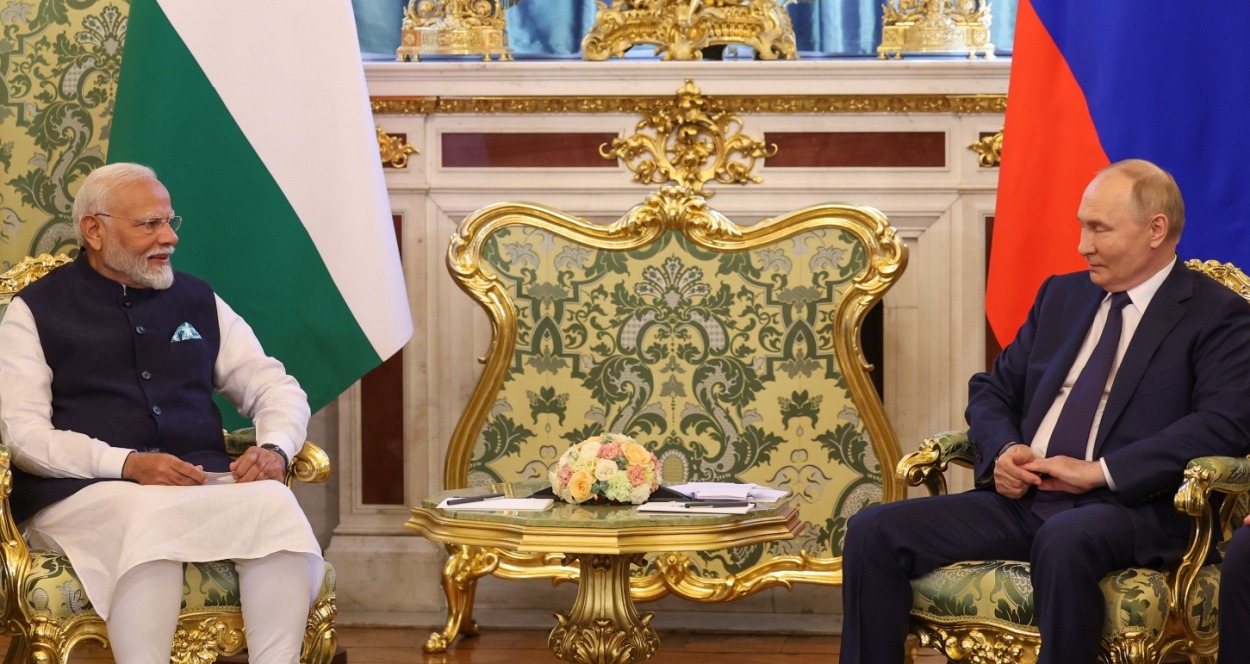Russia has further pushed back the delivery dates for the remaining two units of S-400 ‘Triumf’ (Nato name SA-21 Growler) long-range surface-to-air missiles to India to 2026.
The five missile squadrons ordered were supposed to be delivered by early 2024. Considering the tough geopolitical situation in the Indian subcontinent, India has asked to expedite the deliveries of the remaining missiles.
S-400 is the Russian equivalent of the US Patriot air defense missile system.
The request was made during Prime Minister Narendra Modi’s recently concluded visit to Russia. The Russian side has assured that it will look into the request but has not given a firm deadline for making the deliveries.
An Indian agency quoted the Indian defense officials saying: “India has requested the Russian side during the recent talks to expedite the deliveries for meeting Indian Air Force requirements and try to advance the deliveries,” defense officials said. The Russian side has assured to look into the request.
The Russian side has told India that they could deliver the fourth and fifth squadrons of the system by March 2026 and October 2026, respectively, due to delays caused by their ongoing conflict with Ukraine.
In 2018, India inked a $5.43 billion deal for five S-400 squadrons. It has already received three squadrons and deployed them in the eastern and western regions to deal with China and Pakistan.
The system, with its missiles of different ranges, can take on enemy ballistic and cruise missiles, fighter aircraft, and unmanned aerial vehicles flying at distances up to 400 kilometers.
Apart from the war in Ukraine, payment uncertainties have also contributed to the delay in the delivery of the system. In 2023, payments of around $3 billion were held up. The two sides sought to avoid payments in dollars as the possible threat of US sanctions under CAATSA (Countering America’s Adversaries Through Sanctions Act) loomed large.
While the two sides have been trying to settle payments through a Rupee-Rouble arrangement, it has failed to solve the crisis due to the huge trade imbalance and the accumulation of Rupees in Indian banks.
In July 2019, the Indian government said in a written reply in the Parliament that S-400 deliveries are “likely to be made by April 2023”. At the beginning of 2023, officials said that deliveries were expected to be completed by year-end or early 2024 and would not be further delayed.
The S-400 acquisition comes amid the 2019 Balakot strikes in Pakistan and the 2020 Galwan clash with China. S-400s deployed in the Himalayas can reach the intermediate zone of Chinese airfields and cover up to 80 percent of Pakistan’s territorial space.
During Modi’s Russia visit, the two countries inched closer to finalizing and establishing local maintenance and repair facilities for the S-400 air defense system in India.
As reported by the EurAsian Times, negotiations between the Indian company and Almaz-Antey are nearing completion. The two companies aim to set up two maintenance centers and begin producing spare parts in India by 2028. This potential venture follows discussions initiated by Rostec CEO Sergey Chemezov in 2019, which explored a local S-400 production line in India.
India is not the only country whose defense supplies have been obstructed following the Ukraine war. Russia failed to provide Armenia with ordered weapons worth around US $400 million (it has not yet returned the money).
The failed arms deal was an additional trigger in the worsening Russia-Armenia relations, which made Armenia seek to diversify the sources of its arms imports, looking at the West and India.

S-400’s Punch
Russia’s S-400 is a long-range, road-mobile, surface-to-air missile system and the successor to the older S-300 system. It was developed to target air threats ranging from missiles to aircraft, but Russia demonstrated during the ongoing war that it can also be used for surface-to-surface strikes. Russia has used it to hit Ukrainian cities.
The Pravda state newspaper says a regular S-400 battalion consists of 8 launchers with 32 missiles and costs around $200 million. Each launcher can carry different missile types with ranges from 40 to 400 kilometers and includes truck-mounted radars, a mobile command post, and multiple launch platforms.
Before Russia invaded Ukraine, the International Institute for Strategic Studies called this weapon “one of the world’s more sophisticated” air defense systems. The system first became operational in 2007.
With F-16s scheduled to reach Ukraine soon, the world will watch the impending showdown with S-400s. Experts have been contending that any F-16s in Ukraine that get into the range of S-400s will be targets, while the S-400 system will be the top target for the Ukrainian F-16 pilots.
The S-400’s mobility allows for rapid deployment. Its advanced radar capabilities enable India to look deep into the China-Pakistan border region, enhancing situational awareness and response capabilities. The Indian defense establishment will be closely following the F-16 versus S-400 clash as its arch nemesis Pakistan operates F-16s.
More than observing the clash, India is keen on delivering the remaining two units of the missile systems, for which it even stood up to the US sanction regime. The acquisition of the same system had earned Turkey, a NATO ally, pariah status, and it was ousted from the F-35 development program. But New Delhi managed to balance the concerns of the US with its aspirations to modernize its armed forces.
- Ritu Sharma has been a journalist for over a decade, writing on defense, foreign affairs, and nuclear technology.
- The author can be reached at ritu.sharma (at) mail.com
- Follow EurAsian Times on Google News




